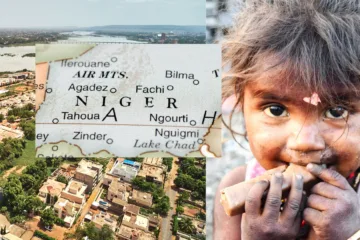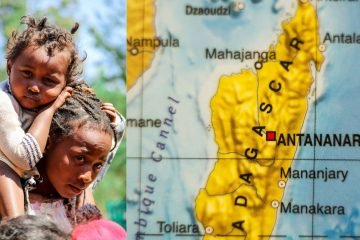The impact of nuclear weapons
Affect caused by Nuclear weapons are among the most indiscriminate, brutal, and devastating types of weaponry that have ever been developed. They are unlike any other weapons in terms of the amount of destruction they produce as well as the radioactive fallout they leave behind, which is exceptionally persistent, spreading, and genetically destructive.
It is possible that millions of people may be killed if a single nuclear bomb were to explode over a huge city. The detonation of tens or hundreds of nuclear weapons would throw off climate patterns over the world, leading to widespread hunger.
A single nuclear weapon has the potential to completely wipe out a city and its population. If several nuclear bombs were detonated over contemporary cities, it would result in the deaths of tens of millions of people. In the event of a catastrophic nuclear conflict between the United States and Russia, the death toll would climb into the hundreds of millions.
The catastrophic damage delivered by nuclear weapons cannot be confined to military targets or to the participants in armed conflict.
Inhumane weapons should be made illegal; blast, heat, and radiation
The fireball that results from a nuclear explosion reaches its full size in around ten seconds, yet the consequences of the explosion continue to be felt for decades afterwards.
An explosion caused by nuclear fission generates enormous amounts of energy in the form of blasts, heat, and radiation. A large shockwave travels at velocities that are in the hundreds of kilometres per hour range. People who are in close proximity to the epicentre of the bomb are the ones that are killed, while those who further away suffer injuries to their lungs, ears, and internal bleeding.
Buildings that collapse and items flying through the air cause people to endure injuries. The intensity of the thermal radiation is so high that nearly everything in the immediate vicinity of ground zero is vaporised. Burns of severe nature are caused by the tremendous heat, which is also responsible for starting fires across a vast region that eventually combine to form a massive conflagration. Even those who have taken refuge in underground bunkers run the risk of suffocating from a lack of air and dying from carbon monoxide poisoning.

Radiation
Ionizing radiation is composed of particles and rays that are emitted by radioactive elements. Nuclear weapons, on the other hand, emit this type of radiation.
Radiation can cause fast mortality at high levels, in addition to the killing of cells and damage to organs. Even in modest dosages, it is possible for it to cause harm to cells, which can then lead to cancer as well as genetic damage and abnormalities. In human beings, it is the cause of the majority of forms of leukaemia, which is another name for blood cancer.
It is also the cause of solid tumours such as thyroid, lung, and breast cancer.
After five years, exposed children begin to show increased rates of leukaemia and thyroid cancer, while the incidence of most solid malignancies begins to rise after about ten years, with the increased risk continuing throughout one’s life. Exposure to radiation can also increase the likelihood of genetic problems occurring in subsequent generations. Radiation exposure can take place either externally (by exposure to particles in the air, water, and soil) or internally (via exposure to radioactive materials) (from breathing, eating and drinking).
The food chain contains a significant amount of radioactive isotopes because they are concentrated in plants and animals.
Ionizing radiation is produced by nuclear weapons, which not only makes those who are exposed to it more likely to die or become ill, but also contaminates the environment and has long-term negative effects on human health, such as the development of cancer and damage to genetic material.

The legacy of nuclear testing;
There have been outbreaks of cancer and other chronic illnesses as a direct result of the over two thousand nuclear test explosions that have been carried out around the world between the years 1945 and 2017. Even though the test sites have been shut down for decades, there are still large tracts of land that are radioactive and unfit for human habitation.
Why is conducting nuclear tests so significant?
There are many different goals that can be accomplished through nuclear testing for the military. In a purely technical sense, the purpose of nuclear testing is to gather knowledge on the efficiency with which nuclear weapons operate, how they respond to different environments, and how structures in the immediate vicinity of nuclear explosions are affected.

The manufacture of nuclear weapons;
Boeing, Honeywell International, Lockheed Martin, and Northrop Grumman are the four firms that benefit the most financially from the production of nuclear weapons and the delivery systems for those weapons. The following is a list of businesses that play a significant role in the creation of such products.
Who makes nuclear weapons and where do they make them?
Weapons manufacture complex
Richland, Washington is the location of the Hanford Site, which is the site’s name.
Oak Ridge, Tennessee is the location of the Oak Ridge National Laboratory.
Located in Oak Ridge, Tennessee is the Y-12 National Security Complex.
Nevada Test Site Near Las Vegas, Nevada
Fewer than one per cent of the world’s nuclear weapons have the potential to destabilise the climate of the entire planet and put up to two billion people at risk of starving in the event of a nuclear famine.
The thousands of nuclear weapons that are now held by both the United States and Russia have the potential to bring about a nuclear winter, which would destroy the vital ecosystems that are required for life to exist.
Would the environment change if there was a nuclear war?
“It serves as a relentless cue that [the threat of nuclear war] is quite terrifying.” Scientists have known for a long time that vast explosions can release adequate amounts of dust, ash, and soot into the air to have an effect on the temperature of the entire planet.
A nuclear explosion would result in a reduction of approximately 13 degrees Fahrenheit in the average temperature of the Earth within the first month after it occurred. This temperature change would be greater than the one that occurred during the most recent Ice Age.
It makes no difference who is attacking who with bombs.
According to the findings of a study that was presented at the annual meeting of the American Geophysical Union in December 2006, even a nuclear conflict on a local or regional scale has the potential to destabilise the global climate for at least a decade.
After a nuclear war, how long would it take for the ecosystem to get back to normal?
between three and ten years.
The study conducted by the Academy states that long-term effects on the global environment cannot be ruled out entirely and estimates that recovery will take between three and ten years to complete. The decrease in ozone concentrations would have a multitude of effects on portions of the atmosphere that were not directly affected by the detonations.
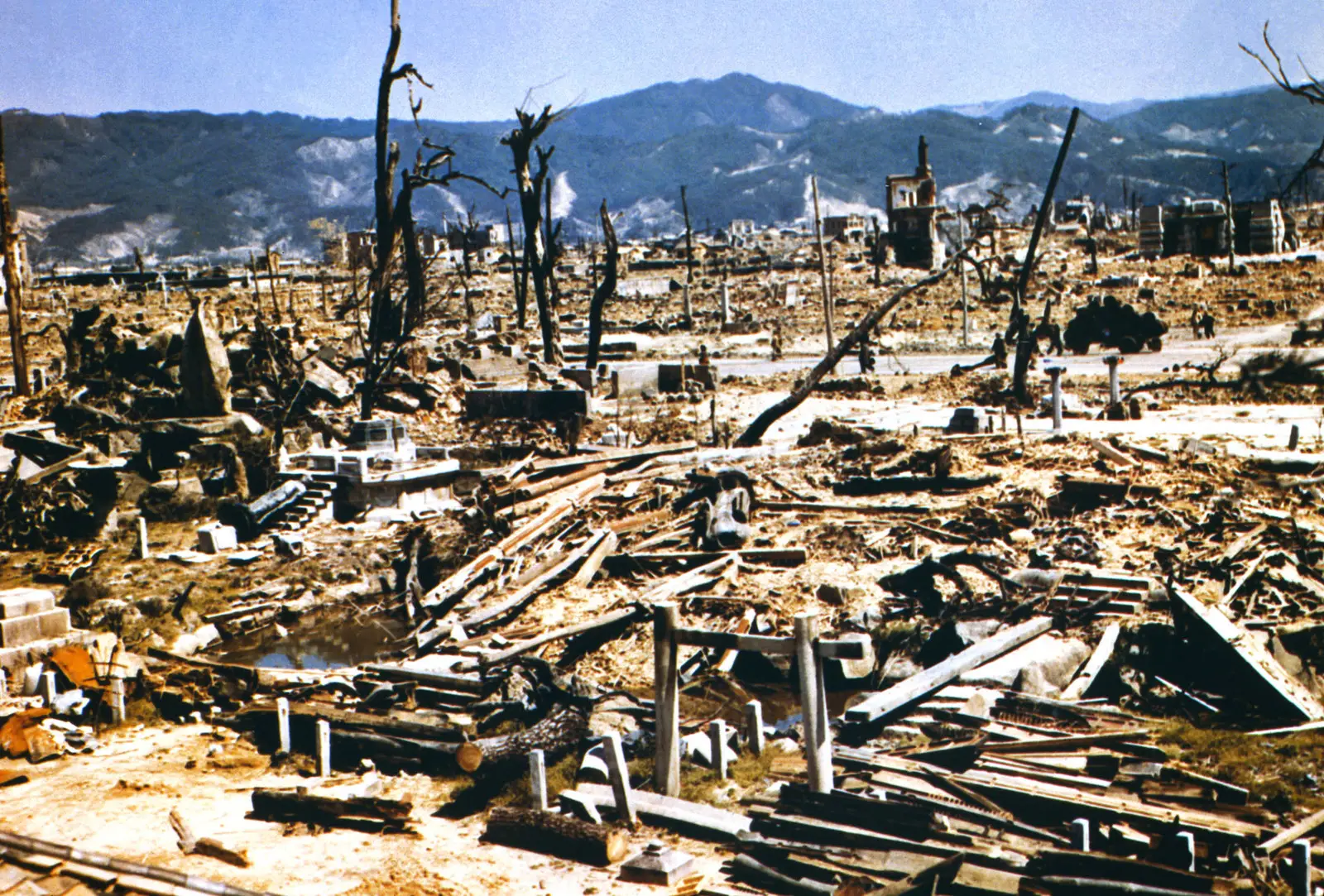
If there was a nuclear war, could people survive?
However, the vast majority of people on Earth would perish in excruciatingly painful ways, such as from burns, radiation exposure, or starvation, and the human civilisation as we know it would very certainly come to an end. In a world that has been completely destroyed, survivors will have to make do with very little. It doesn’t matter who is assaulting who with bombs. Both sides will get hurt.
Even a nuclear conflict on a local or regional scale has the potential to destabilise the global climate for at least ten years, according to the findings of a study that was presented at the annual meeting of the American Geophysical Union in December 2006. The study was conducted in 2006 and its findings were presented at the meeting.
In the aftermath of a nuclear conflict, how long do you think it would take the environment to return to its pre-war state?
somewhere in the range of three to ten years.
According to the findings of the study that was carried out by the Academy, there is a possibility that there will be long-term repercussions on the ecosystem of the entire planet, and it is estimated that the recovery process will take between three and ten years to finish. The fall in ozone concentrations would have a myriad of impacts on regions of the atmosphere that was not immediately touched by the detonations.
Could people continue to live through the effects of a nuclear war?
On the other hand, the vast majority of people living on Earth would die in agonising ways, such as from burns, exposure to radiation, or starvation, and the human civilisation as we know it would definitely come to an end. On a planet where everything has been obliterated, those who have managed to survive will have to make do with very little.

Would a nuclear war be able to stop the progression of climate change?
And despite the fact that the earth’s temperature would drop, the nuclear winter that would be triggered by a full-scale global conflict (or even “nuclear fall,” as some researchers prefer to refer to it) would not be enough to undo the effects of what we might morbidly refer to as “traditional” climate change brought on by humans.
Doctors and other first responders would be unable to perform their jobs in areas that have been destroyed and are poisoned by radioactivity. Even a single nuclear explosion in a contemporary city would strain the already stretched-thin resources for disaster relief to their breaking point; a nuclear war would overwhelm whatever relief mechanism we could create in preparation.
The displaced populations that result from a nuclear war will cause a refugee catastrophe that is orders of magnitude larger than any other refugee problem that we have ever encountered.
Whether or not they are actually detonated, nuclear weapons are very dangerous to both people’s health and the environment.
What would happen to humans if there was a nuclear war?
It doesn’t matter how large the nuclear strike is; it would still destroy the world’s food supply and result in the deaths of billions of people. The lecturer explains that the only option is to outlaw nuclear weapons because “if nuclear weapons exist, they can be utilised,” and the world has been perilously close to starting a nuclear war on multiple occasions.
Which countries would emerge victorious from a nuclear war?
According to recent studies, Australia and New Zealand are the two countries that have the best chance of surviving a nuclear war on our planet.
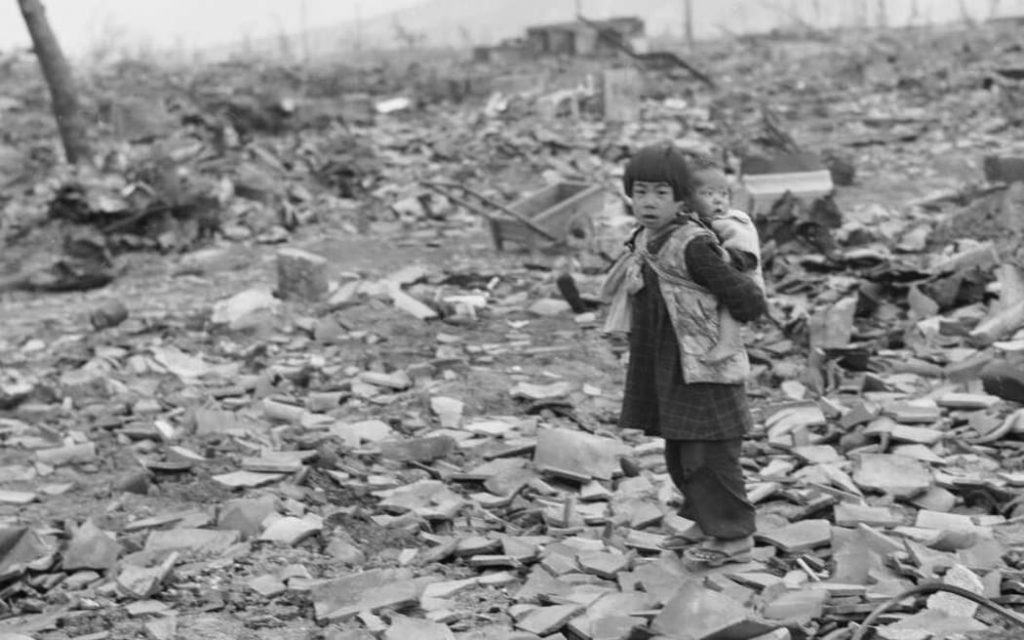
How long did it take for Hiroshima to become habitable again?
75 years
According to what he heard, some people were speculating that Hiroshima might not be habitable for the next seventy-five years. However, during the first twenty-four hours after the disaster, survivors were already making their way back into the city to look for missing family members, friends, and previous homes among the debris.
Would society be able to make it through a nuclear war?
However, the vast majority of people on Earth would perish in excruciatingly painful ways, such as from burns, radiation exposure, or starvation, and the human civilisation as we know it would very certainly come to an end. In a world that has been completely destroyed, survivors will have to make do with very little.
Spending money on nuclear weapons takes away scarce resources that could be used for essential social services.
Humanitarian repercussions and the dangers posed by the use of nuclear weapons
The most chilling and terrifying weapon ever created.
There is no weapon that is more destructive than nuclear weapons; there is no weapon that causes such unimaginable human suffering, and there is no way to control how far the radioactive fallout will spread or how long the effects will last. Nuclear weapons are the most terrifying weapons that have ever been invented.
If a nuclear bomb were detonated in a city, it would instantly kill tens of thousands of people. In addition, tens of thousands more would suffer terrible injuries and eventually die as a result of radiation exposure.
A nuclear war might entail long-term damage to our planet in addition to the enormous loss of life that would occur in the immediate term. It has the potential to drastically alter the earth’s ecosystem and bring about a decrease in global temperatures, both of which could lead to a lack of food in many parts of the world.
Who controls the majority of the world’s nuclear weapons?
In spite of various figures on stockpiles, the United States of America and Russia have much more nuclear weapons than the rest of the world combined, accounting for 90 per cent of the world’s total stockpile. According to Statista, China is the nation that possesses the third-most nuclear weapons with a total of 350.
How many nuclear weapons are there on planet earth?
From a peak of 70,300 active weapons in 1986, there are around 3,750 active nuclear warheads and 13,890 total nuclear warheads in the globe as of 2019. This represents a significant decrease.
Is the destruction of a whole nation possible with a nuclear weapon?
Even a Tsar bomb, with the impact radius that it has, cannot kill an entire country by itself. A nuclear bomb is capable of obliterating an entire nation only on the scale of a very small state, such as Vatican City or Monaco, which have geographical sizes of 44 and 202 ha, respectively.
EFFECTS ON HUMANS
Effects on the surrounding air similar to those caused by conventional explosives can be induced by nuclear explosions. The shock wave has the potential to do direct harm to humans, such as by rupturing eardrums or lungs or by flinging people at high speeds; nevertheless, the majority of casualties are caused by falling structures and flying debris.
Why it’s not a good idea to have nuclear weapons?
It wouldn’t simply be the country that was attacked that would suffer. A nuclear war would be catastrophic for every nation, including the one that initiated it. The threat of causing widespread destruction all around the world is what makes the idea of a nuclear war so horrifying. And this is also the reason why nuclear weapons are such a poor choice for use in battle.
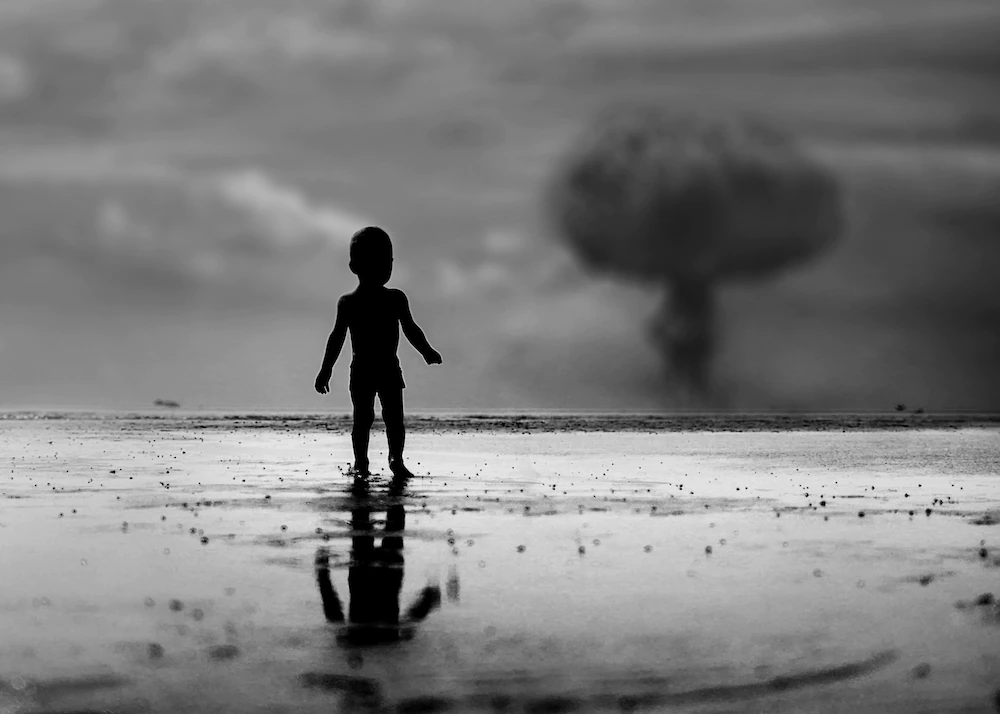
The Devastating Nuclear Attacks on Hiroshima and Nagasaki
The saving of American lives was, of course, the first priority in bringing an early conclusion to the conflict with Japan. It has been hypothesised that the second purpose was to provide the Soviet Union with a demonstration of the newly developed weapon of mass destruction.
Why did the US bomb Nagasaki?
Critics dispute how the Japanese government was brought to surrender, and highlight the moral and ethical implications of nuclear weapons and the deaths caused to civilians; supporters believe that the atomic bombings were necessary to bring a swift end to the war with minimal casualties; supporters dispute how the Japanese government was brought to surrender.
Do the cities of Nagasaki and Hiroshima still have radiation?
Existe-t-il toujours de la radioactivité a Hiroshima et à Nagasaki? The quantities of radiation that are currently present at Hiroshima and Nagasaki are on par with the extremely low levels of background radiation (natural radioactivity) that may be found in any place on Earth. It has no influence on the human body in any way.
Which bomb was larger, the one that was dropped on Hiroshima or Nagasaki?
In point of fact, the bomb of plutonium type that exploded over Nagasaki had a higher explosive force than the weapon that was used on Hiroshima. The differences in the geographical characteristics of the two cities are likely to have had a significant role in determining the reasons for the higher number of fatalities that occurred in the second city.
How many persons lost their lives in the Hiroshima bombing?
However, it is believed that around 70,000 to 135,000 people died as a result of acute exposure to the bombings in Hiroshima, and that 60,000 to 80,000 people died as a result of long-term side effects of radiation in Nagasaki. These deaths occurred in both cities.
Who actually invented the atomic bomb?
Robert Oppenheimer
Robert Oppenheimer is considered by many to be the “father of the atomic bomb.” Trinity Test was the name given to the successful explosion of the first atomic bomb, which took place on July 16, 1945, in a desolate desert area close to Alamogordo, New Mexico.
Is there still radioactivity in Hiroshima?
Existe-t-il toujours de la radioactivité a Hiroshima et à Nagasaki? The quantities of radiation that are currently present at Hiroshima and Nagasaki are on par with the extremely low levels of background radiation (natural radioactivity) that may be found any place on Earth.
What kind of effects did the nuclear bomb have on the economy?
Economic loss
For instance, a survey carried out by the City of Hiroshima indicated that out of a total of 76,327 buildings, including homes, shops, industries, and schools, 70,147 had been completely or partially destroyed by fire or explosion.
How much destruction was brought about by the nuclear bomb?
On August 6, 1945, a uranium bomb exploded over Hiroshima, and its explosive yield was equivalent to that of 15,000 tonnes of TNT. It destroyed and burned approximately seventy per cent of all buildings, was responsible for the deaths of an estimated one hundred and forty thousand people by the end of 1945, and was also associated with elevated rates of cancer and other chronic diseases among those who survived.

What kind of damage would a nuclear war inflict on our planet?
The picture that results when you search for “how can nuclear weapons destroy the world?”
If nuclear weapons were to be detonated, the smoke and soot produced by the explosions would obscure the sun, which would lead to the failure of crops grown all over the world, a drop in global temperatures, and the expansion of sea ice, which would plunge the planet into a “Nuclear Little Ice Age” that could last for up to thousands of years.
How can we best get ourselves ready for a nuclear war?
It should contain things like bottled water, packaged snacks, emergency medications, a hand-crank or battery-powered radio to acquire information in the event that the power goes out, a flashlight, also get some extra batteries for vital goods like flashlights and radios.
Keep enough supplies for at least three days if at all possible.
Are nuclear weapons capable of destroying an entire nation?
Even a Tsar bomb, with the impact radius that it has, is not powerful enough to annihilate a whole nation.A nuclear weapon can obliterate an intact nation only on the scale of a very small nation, such as Vatican City or Monaco, which have land sizes of only 44 ha and 202 ha, respectively.



